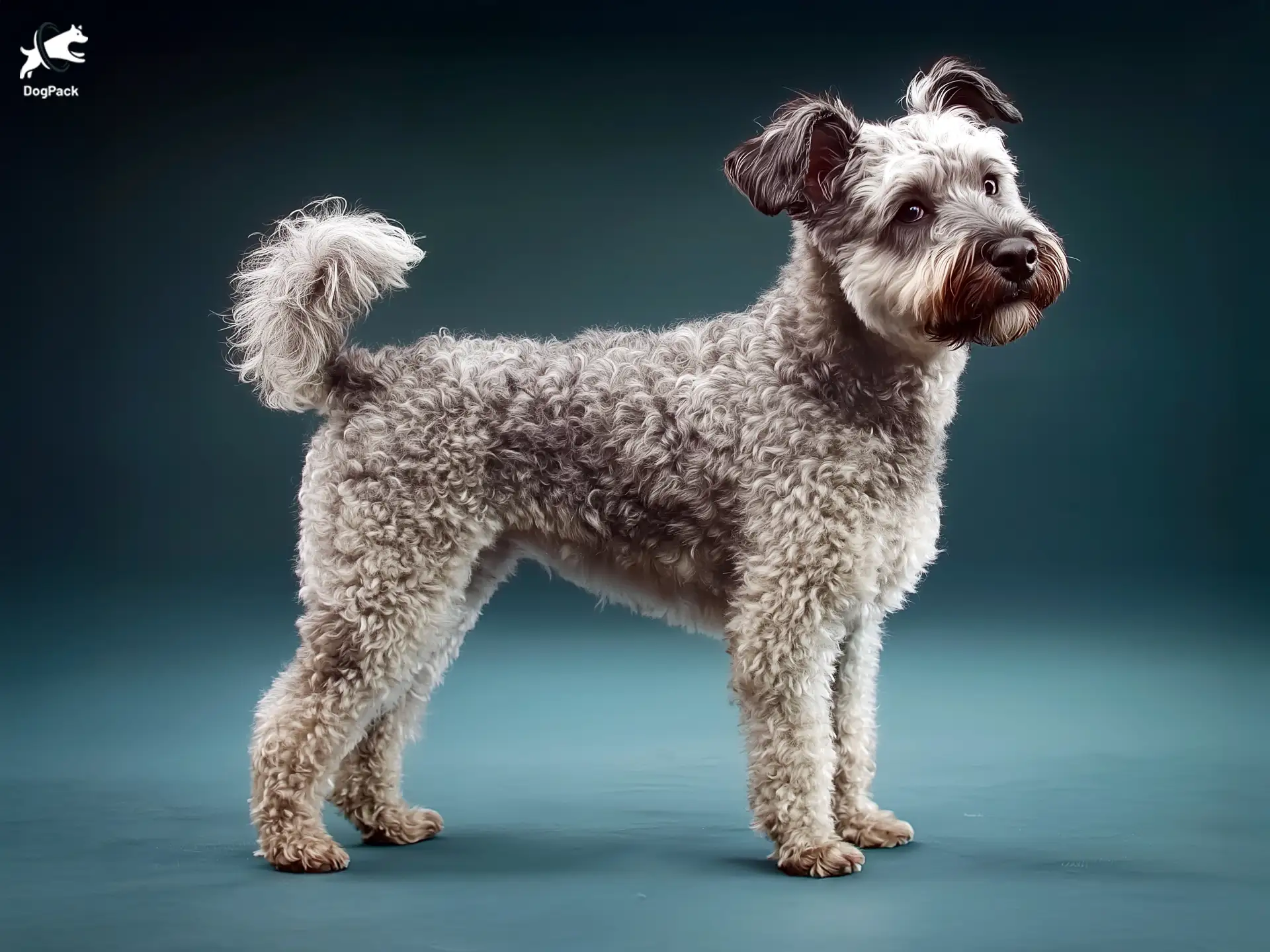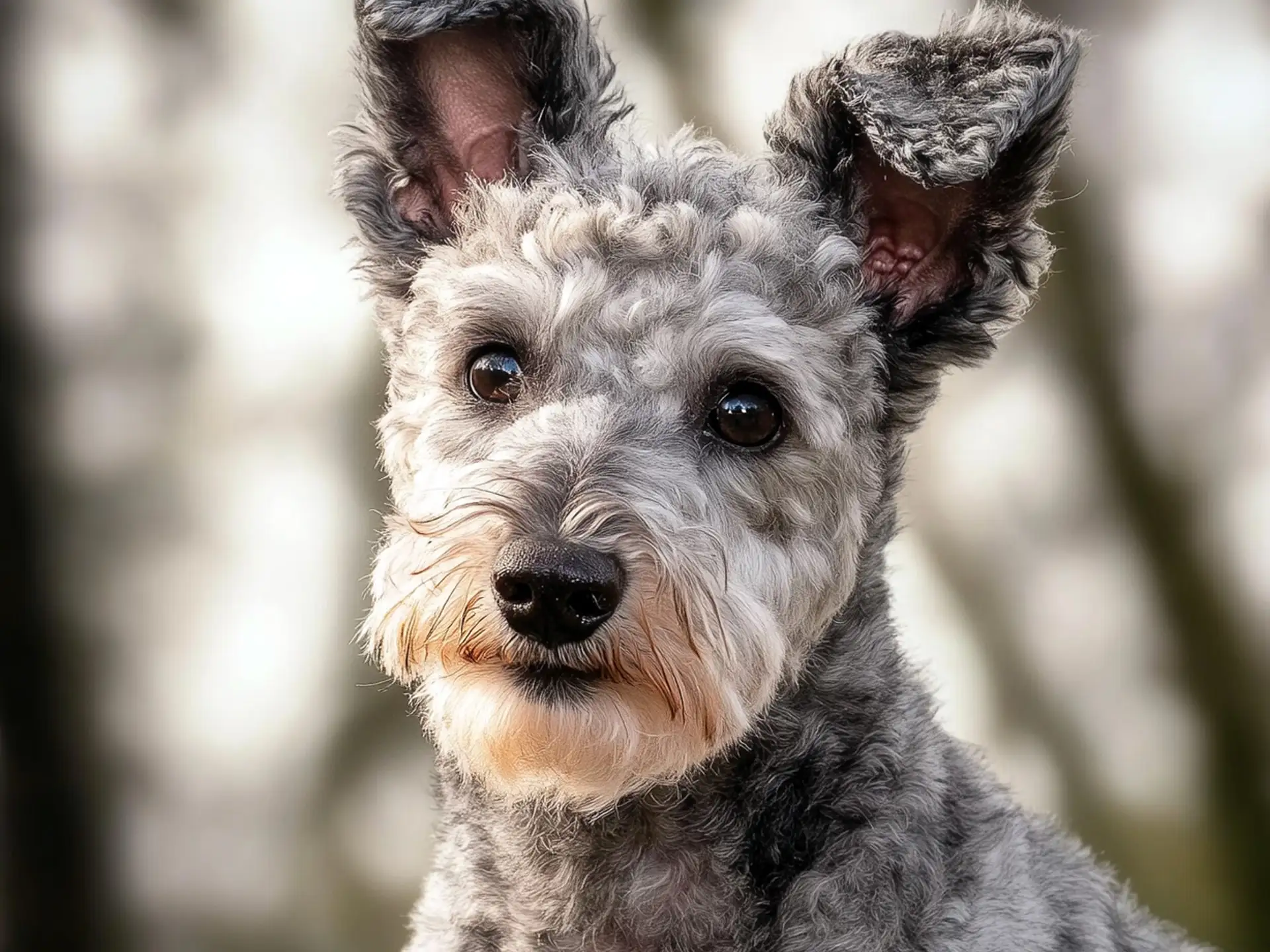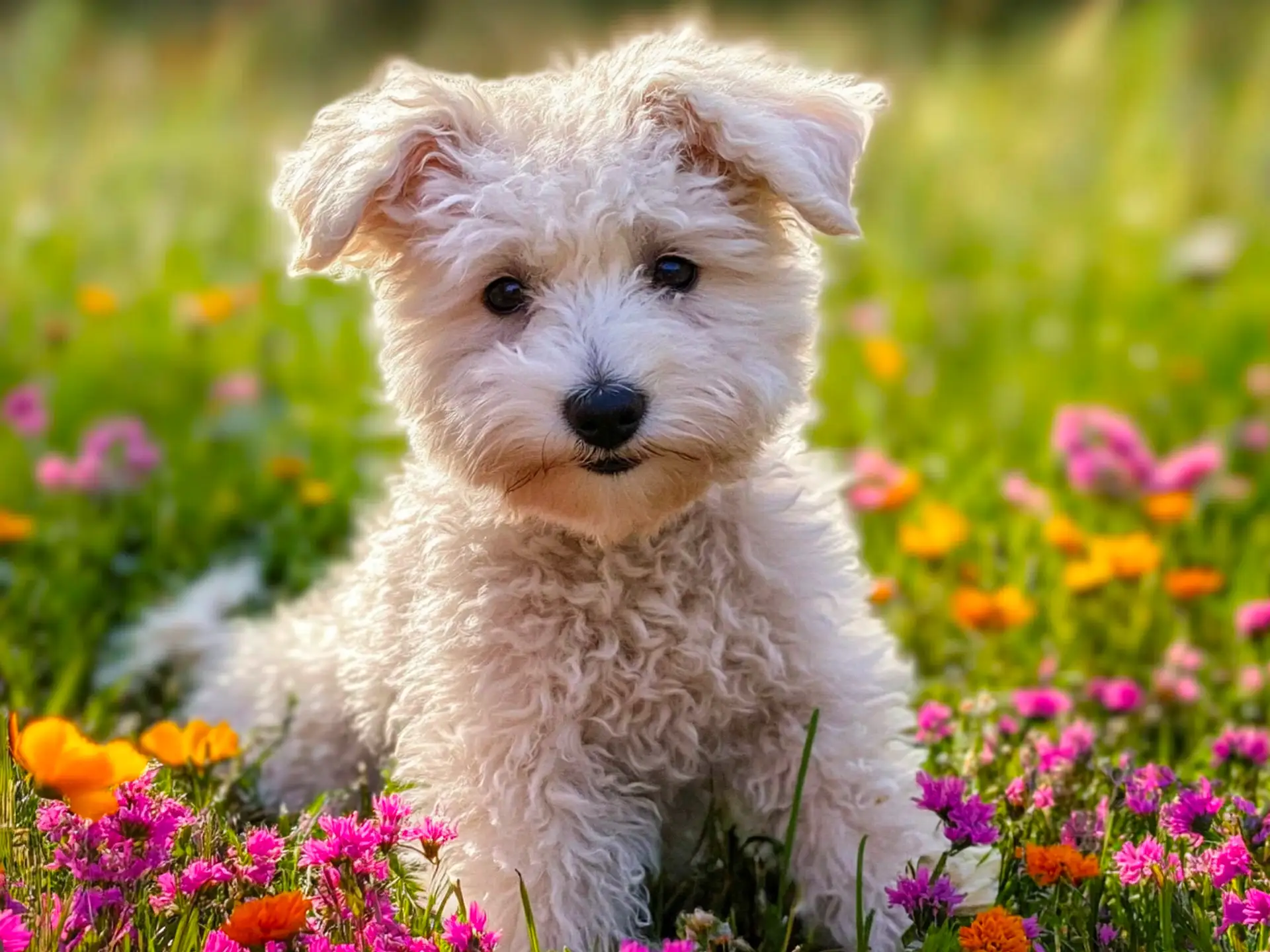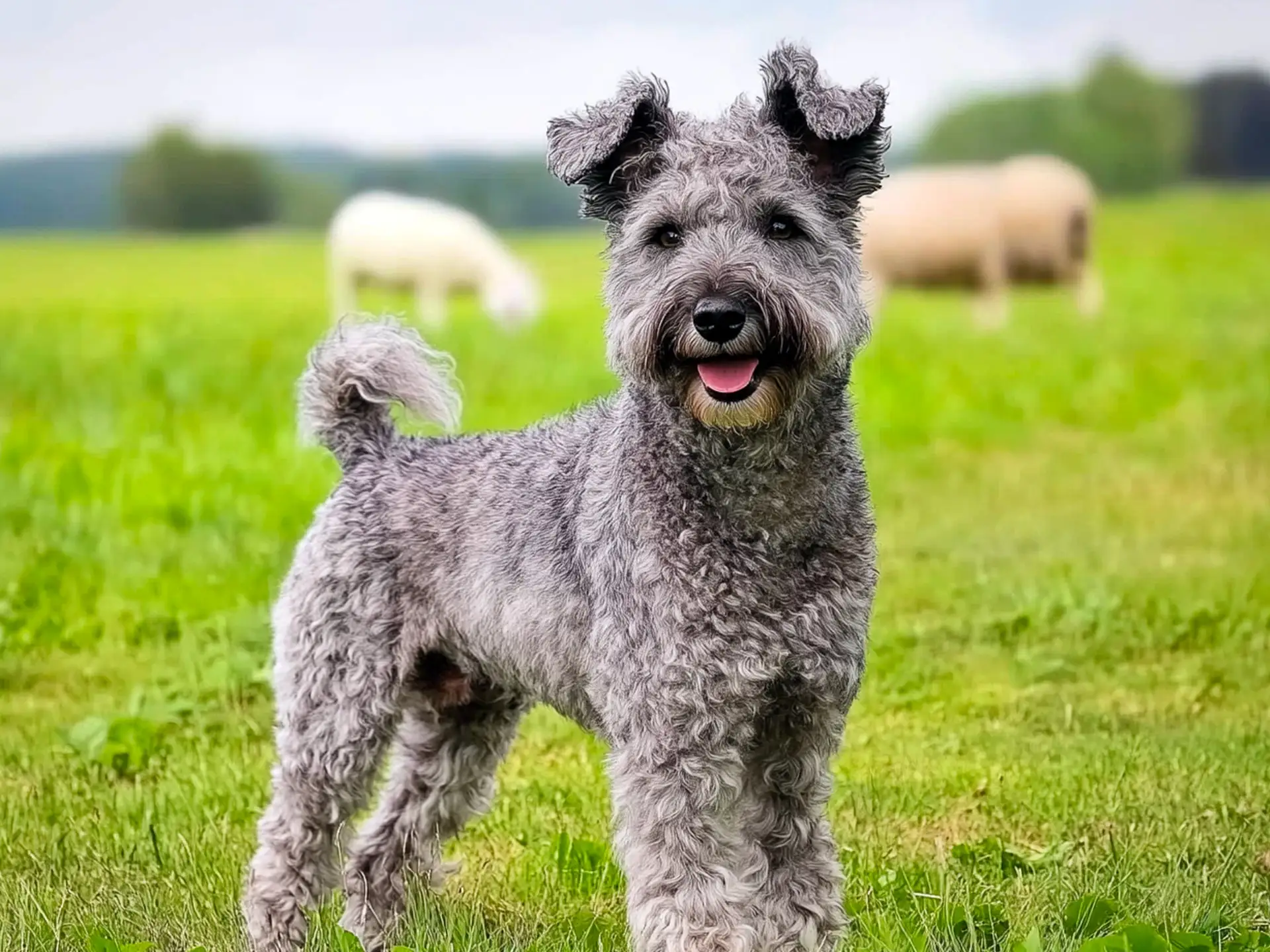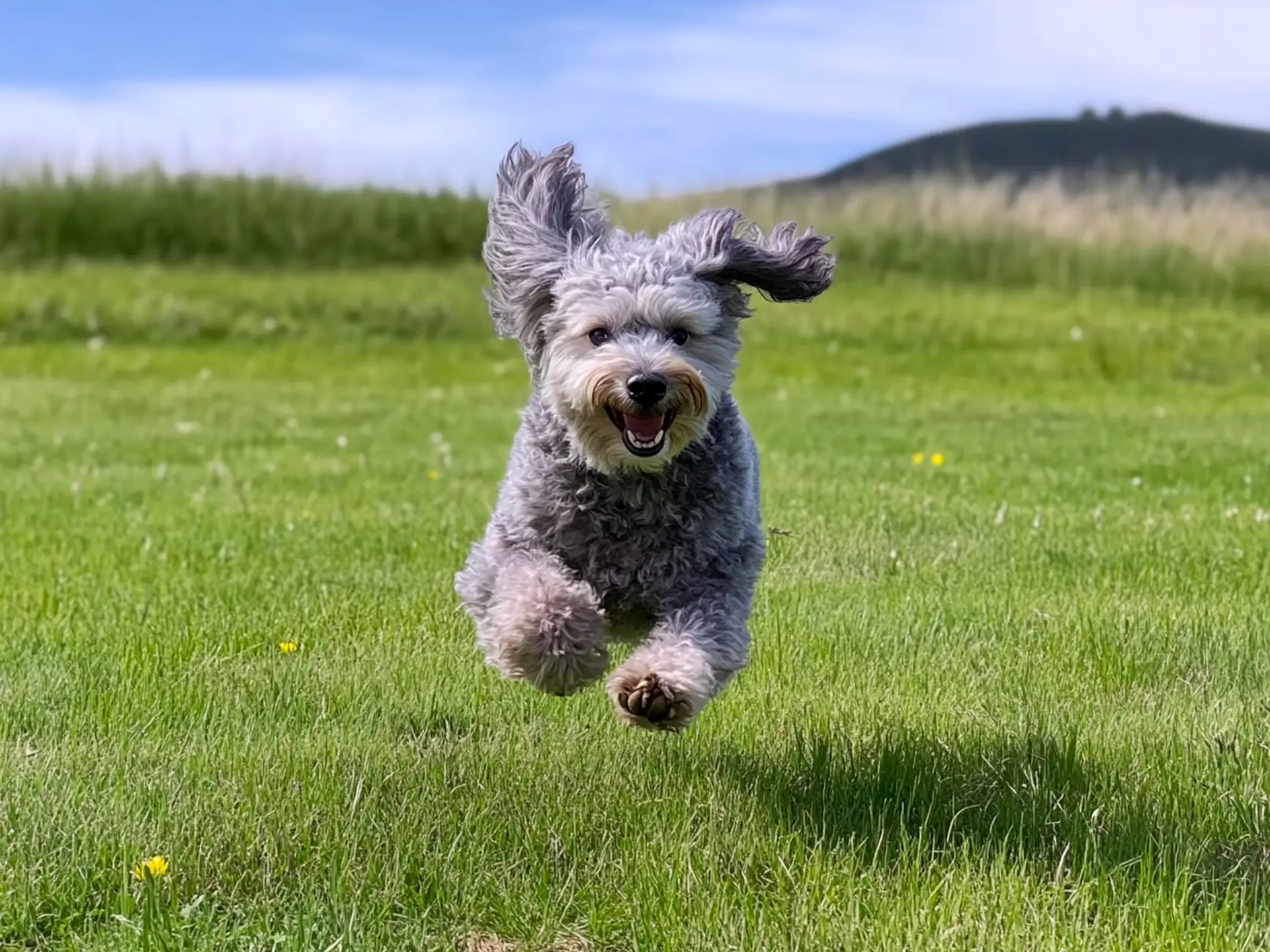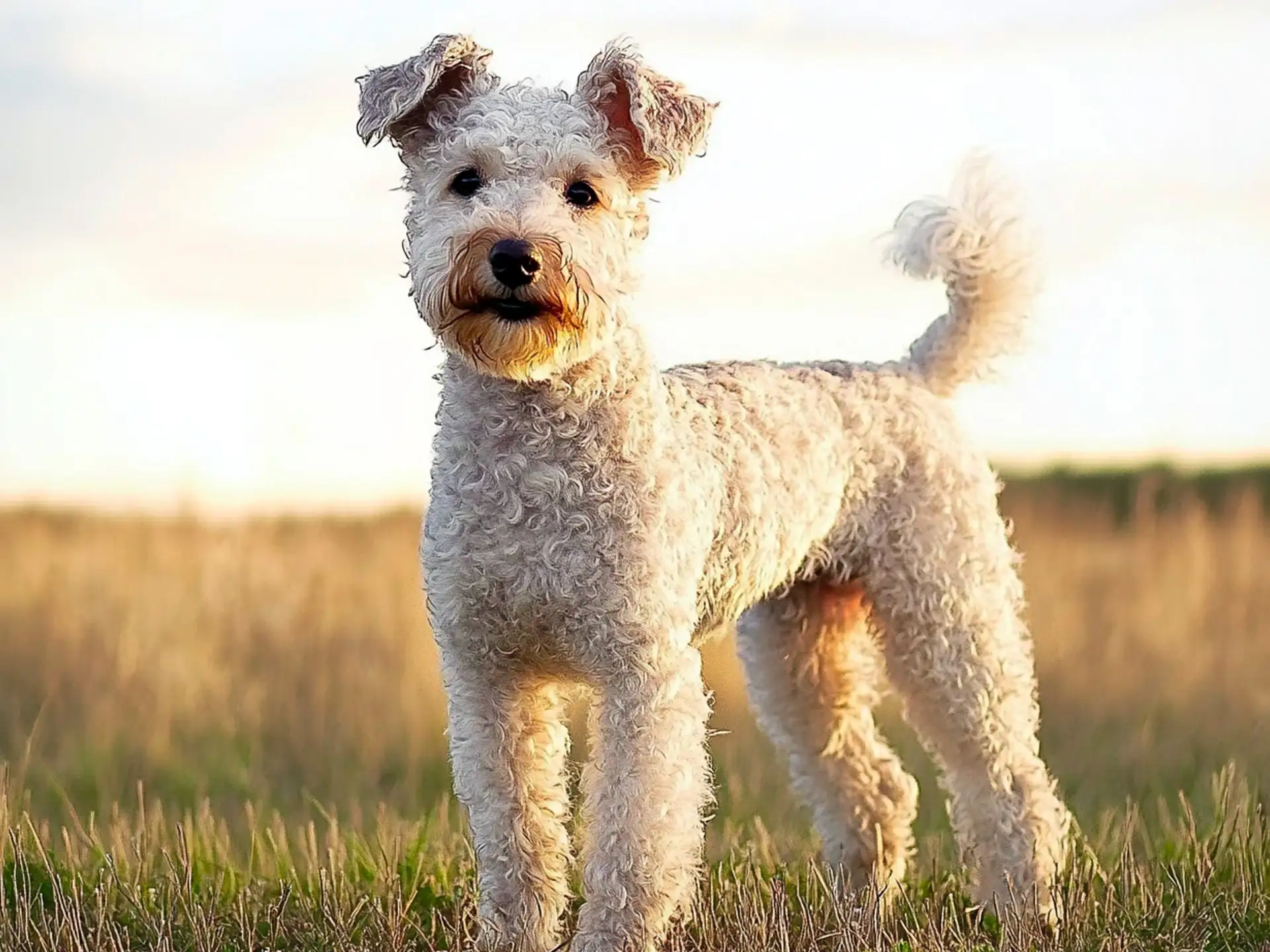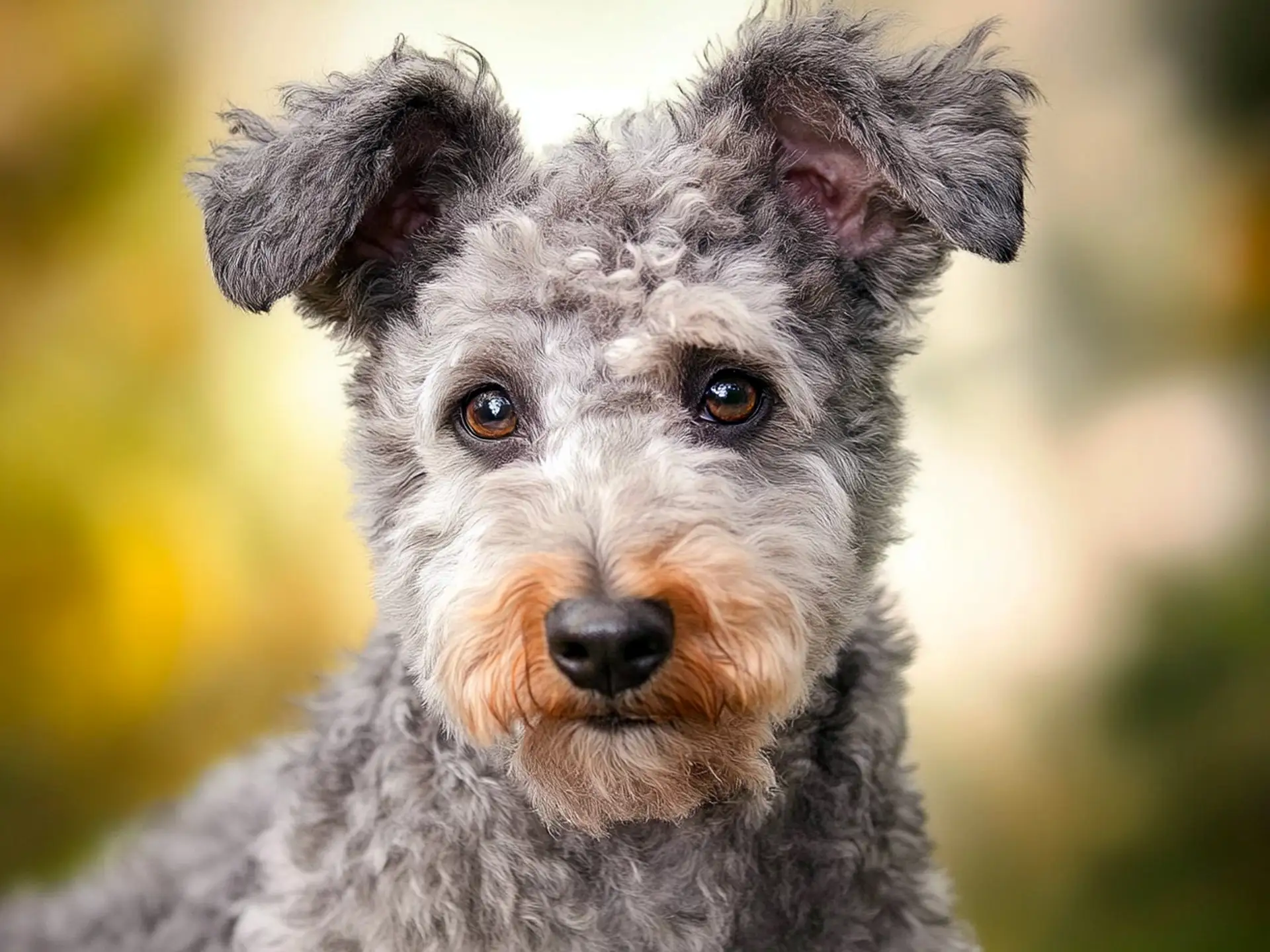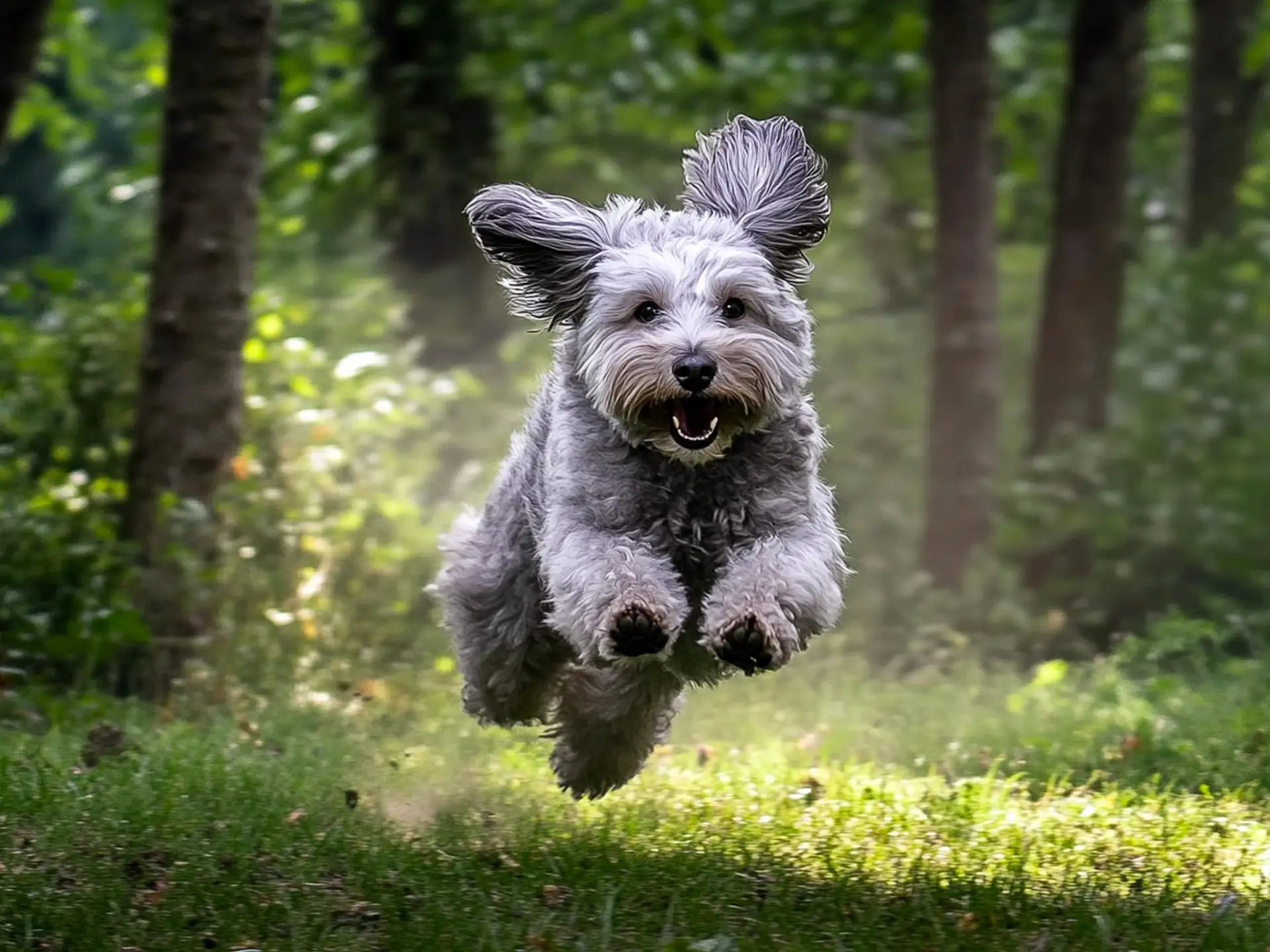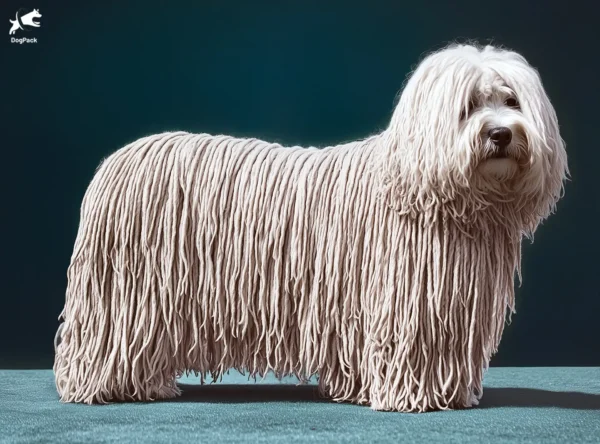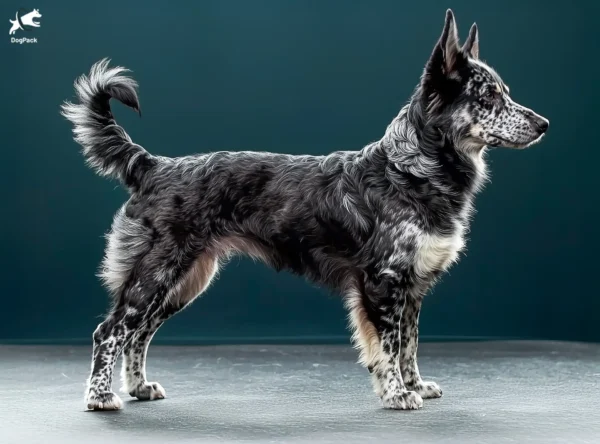Pumi Dog Breed Info & Overview
With its delightful corkscrew curls and a spirited temperament, this Hungarian herding dynamo has been winning hearts worldwide. Agile and enthusiastic, the Pumi thrives on mental challenges and lively play sessions. Whether you’re hiking a mountain trail or offering puzzle toys at home, these devoted pups bring a burst of sunshine to active families searching for a one-of-a-kind companion.
Characteristics
Pictures
Breed History
The Pumi traces its origins to Hungary, where it evolved from herding dogs that combined the practical traits of local sheepdogs with influence from French and German herders. Historically used to round up and guard flocks, these curly-coated companions became prized for their quick wits and nimble movements. Their name likely reflects their link to the Puli and various continental herding breeds.
Over time, farmers across the Hungarian countryside selectively bred these dogs for resilience and adaptability. Their keen hearing and watchful nature made them excellent protectors of both livestock and homesteads. While the Puli was more common, this newer “variant” gained attention for its distinct, upright ears and tighter curls. Gradually, this spunky herder established its own breed identity separate from the Puli.
Recognition on the global stage took a little longer, but once the Pumi made its way into Western dog shows, it quickly charmed spectators with its unique silhouette and lively demeanor. Today, it’s still considered a rare dog breed, with passionate enthusiasts working hard to preserve its heritage. Despite modest numbers, it has carved out a loyal following among lovers of energetic herding dogs.
Temperament, Personality
Playful, watchful, and always on the go, this breed keeps owners on their toes with its endless curiosity. From investigating every corner of your home to performing comedic spins in the backyard, these pups hardly have an off-switch. Early socialization is key, as they can be suspicious of unfamiliar faces. However, once trust is earned, they become loyal shadows following you everywhere.
Raised around children, they often turn into enthusiastic playmates and guardians. Their alert nature, paired with a herding instinct, might lead them to “herd” kids if not guided properly. For the most part, they adore interactive games like fetch or tug-of-war. As for other pets, careful introductions help prevent any overly bossy behavior. With patience, a Pumi fits well into a dynamic household.
Strangers may receive a cautious sniff before acceptance, but these canines prefer to make new friends on their terms. Ongoing positive experiences and plenty of mental stimulation will keep them from becoming anxious or overly vocal. Families looking for a confident, clownish companion will find that this breed’s vibrant personality brightens the day—just be prepared to engage in lively activities at any given moment!
Physical Characteristics
At first glance, the tight curls and perky ears are a Pumi trademark. Their medium build gives them an athletic frame, well-suited for quick twists and turns when corralling livestock—or chasing a favorite squeaky toy. With a square silhouette and a curly coat that stands away from the body, they strike an adorable balance between fluff and muscle.
Those upright ears, shaped like little triangles, are always on the lookout for sounds of excitement—like the refrigerator door opening or a neighbor’s dog barking. Beneath that bouncy coat lies a lithe physique ready for agility courses or energetic hikes. Eye colors range from warm browns to darker shades that twinkle with mischievous intelligence whenever you call their name.
Though often described as whimsical, their appearance is grounded in practical function. The coat is somewhat weather-resistant and helps protect them from the elements. Regular brushing and occasional trimming keep those playful ringlets looking fresh. If you’re seeking a dog that stands out among medium dog breeds, the curly coat, expressive ears, and lively stance of this breed certainly make a lasting impression.
Health Issues
Overall, this breed is hearty, but hip dysplasia can be a concern, as with many active dogs. Regular checkups, proper nutrition, and maintaining a healthy weight help reduce stress on joints. Another health point to watch for is patellar luxation, where the kneecap might slip out of place. Early detection and preventive measures ensure these canines stay agile and comfortable.
Some may also be prone to eye conditions like cataracts, making routine veterinary eye exams important. Responsible breeders perform health screenings to minimize hereditary issues, so if you’re adopting, inquire about these tests. Providing enough exercise, a balanced diet, and prompt care at the first sign of discomfort go a long way in extending their lifespan and vitality.
Because this breed is relatively rare, consult reputable sources like the American Kennel Club or veterinary experts for in-depth guidance on genetic testing and recommended health checks. Routine grooming doubles as a mini health inspection—keep an eye out for any skin irritations hidden beneath those curls. Overall, a proactive approach ensures this boisterous companion remains a picture of health throughout its life.
Grooming Needs
Curls, curls, and more curls—this dog’s coat might look high-maintenance at first, but moderate care usually does the trick. Brushing them once or twice a week prevents tangles and mats. A gentle comb-out can reveal any hidden debris they’ve collected while romping outdoors. Because they shed minimally, they’re often recommended for allergies, though no breed is 100% hypoallergenic.
Professional grooming every couple of months helps shape the coat, keeping it springy rather than overly puffy. Trimming around the ears and paws keeps them neat. Frequent bathing, however, isn’t necessary—too much shampoo can strip the natural oils that lend those curls their signature bounce. A quick rinse if they get muddy is typically enough to maintain that adorable appearance.
Focus on ear cleaning, especially since those upright ears can catch dust, grass seeds, or pesky bugs. Regular nail trims ensure comfortable movement during daily adventures. Whether you prefer a home grooming routine or a trusted salon, make sessions positive with treats and praise. The Pumi may not lounge for hours in your lap, but they’ll appreciate the head scratches that come with brush time.
Exercise Requirements
If you’re a couch potato, this breed might outpace you—literally! A Pumi craves action, thriving on at least one or two brisk walks or runs a day. Beyond basic walks, they excel in dog sports like agility, obedience, and even herding trials. The mental challenges in these activities keep them sharp, while the physical exertion satisfies their boundless energy.
Engage them with varied activities to prevent boredom: puzzle feeders, hide-and-seek in the yard, or a backyard obstacle course. Their herding instincts can lead them to chase anything that moves, from squirrels to skateboarders, so a secure yard or leash is vital. Social outings, like dog-friendly hiking trails, allow them to explore new scents while staying mentally and physically engaged.
Even in smaller living spaces, such as an apartment, they can thrive if daily exercise needs are met. Still, families with yards or easy access to parks might find it simpler to release that energy in a controlled environment. If you keep up with the fun, they’ll return the favor by curling up at your feet after a day of exhilarating playtime.
Training Tips
Intelligent and quick-witted, this breed learns commands rapidly, but they also get bored if training becomes repetitive. Short, upbeat sessions with varied drills—like weaving poles or retrieving specific toys—keep them alert. Positive reinforcement works wonders; scolding can cause them to shut down. Because they can be headstrong, be consistent and firm while still maintaining a lighthearted, game-like vibe.
Socialization from puppyhood helps curb any territorial tendencies around strangers or other animals. Group training classes can expose them to novel experiences. The Pumi’s watchful nature means they’ll alert you to anything unusual, so teaching a “quiet” command early prevents nonstop commentary. Incorporating puzzle toys during downtime challenges their mind when you’re not actively practicing obedience cues.
Herding instincts might crop up, especially if they start nipping at heels. Redirect that natural urge by giving them structured herding exercises—like guiding a ball in a safe, enclosed space—or focusing on advanced commands that emphasize control. With patience and creativity, training becomes a team-building adventure, fostering a deep bond that lasts through all of your playful, energetic years together.
Nutrition, Diet
The Pumi’s busy lifestyle demands a nutrient-rich diet with ample protein to support muscular activity. Aim for a balanced kibble or fresh-frozen formula containing at least 25–30% high-quality protein. Look for foods featuring real meat sources—like chicken, turkey, or fish—plus wholesome grains or vegetables for complex carbohydrates. The extra protein helps maintain lean body mass while fueling daily herding hijinks.
For adult dogs weighing around 25 pounds (11 kg), start with roughly 1¼ to 1¾ cups of premium kibble split into two meals per day. Adjust portions based on energy output—working or highly active dogs may need a little more. Monitor treats carefully, especially if you’re using them heavily in training. Swap store-bought snacks for crunchy veggies like carrots to keep calories in check.
Calcium and glucosamine supplements can be beneficial if recommended by your vet, particularly for pups engaged in intense activity. Avoid overfeeding to prevent excess weight that could strain joints. Always keep fresh water accessible, and check with a canine nutritionist if you’re considering a raw or home-cooked menu. A mindful feeding plan ensures this breed stays light on its paws and ready to work or play.
Adoption, Breeders
Because they’re uncommon, finding a Pumi might require patience. Start by exploring breed-specific rescue organizations or shelters where you can discover a hidden gem. For those seeking a puppy, reputable breeders should provide health clearances and let you meet the parent dogs, ensuring confidence in both temperament and lineage. This extra diligence often leads to a well-adjusted companion.
To narrow your search, visit the Pumi Club of America for breeder listings and detailed breed information. Additionally, websites like Adopt-a-Pet sometimes have Pumis in need of loving homes. If possible, talk to other owners or join online communities. Their firsthand experiences can help you spot red flags, like questionable breeding practices or suspiciously low adoption fees.
A reliable breeder or rescue group will guide you on training and health insights. They can also offer advice about grooming routines or dietary specifics that might not be apparent to first-time adopters. Whether you choose a puppy or an older dog, it’s all about finding the right match. With the correct research and a dash of luck, you’ll soon welcome a new curly-tailed family member.
Family Pet?
Busy, fun-loving households are where this breed excels. They relish interactive play, making them wonderful for families that enjoy daily walks, frisbee sessions, or simply clowning around together. Because they’re sensitive, harsh discipline can harm their relationship with you. Instead, teach kids to approach them gently and respect boundaries. In return, they’ll reward everyone with boundless affection and silly antics.
Their herding drive might lead them to circle or gently nip at children and other pets, so it’s vital to supervise early interactions. With consistent training, they learn to differentiate between real tasks and casual family fun. These dogs love being at the center of activity, but they also appreciate calm, cozy evenings curled up near their favorite people after a day of excitement.
You’ll often see them trotting around, checking on everyone, and scoping out anything new in the home. They make attentive watchdogs, quick to alert if something seems off. Ultimately, a Pumi thrives in families willing to invest time and effort into proper training and exercise. Give them plenty to do, and they’ll become a faithful companion who fits right into your lively lifestyle.
Right For You?
If your idea of happiness involves regular outdoor adventures, puzzle-solving sessions, and a bundle of curly energy by your side, this breed might be your perfect match. On the flip side, a laid-back family with minimal desire for daily exercise could find the dog’s non-stop spark overwhelming. They do best with a routine that balances physical activities with mental enrichment.
Those who adore a talkative, playful pup with a flair for comedic timing will be smitten. If you’re sensitive to dog hair or allergic reactions, their minimal shedding can be a plus. However, “low shedding” doesn’t always mean “no allergies.” Ultimately, the Pumi is an ideal companion for individuals or families ready to embrace a life filled with fun, training challenges, and a bit of herding quirkiness.
Before committing, consider whether you have enough time, space, and patience. These dogs flourish with dedicated engagement and can become restless if left under-stimulated. If you’re enthusiastic about dog sports, mental exercises, and becoming a top-notch trainer, this breed might be a dream come true. Think carefully, but if you answer “yes” to an active lifestyle, prepare to welcome a curly bundle of energy into your life.
Conclusion
Intelligent, lively, and always eager for the next adventure, the Pumi can be a joy for active owners who appreciate a witty, curly-coated partner. By ensuring enough mental and physical stimulation, you’ll see this dog bloom into a devoted friend who keeps the entire household entertained. If you want a bright, spirited companion to share life’s daily excitement, this Hungarian herder just might steal your heart.
FAQs
-
How is the Pumi different from other Hungarian herding breeds like the Puli and Mudi?
The Pumi is more agile and excitable than the Puli and less intense than the Mudi. Unlike the Puli’s corded coat, the Pumi has curly, corkscrew-like fur, requiring less maintenance. It’s also more vocal and excels in quick, precise herding movements.
-
Does the Pumi have a naturally curly tail?
Yes! The Pumi’s tail curls tightly over its back, which is a key breed trait. This differentiates it from other Hungarian herding breeds. The high-set, curled tail enhances its expressive nature, as the Pumi often uses it to communicate excitement or alertness.
-
Is the Pumi a good dog for urban living?
Yes, the Pumi adapts well to city life—but only if given plenty of exercise and mental stimulation. This breed needs interactive play, training, and agility courses to stay happy in an apartment setting. Without stimulation, it may develop boredom-based barking behaviors.
-
How intelligent is the Pumi compared to other herding breeds?
The Pumi ranks among the most intelligent herding breeds. It learns commands quickly, but its independent streakmeans it requires engaging, positive reinforcement training. It excels in dog sports, especially agility, obedience, and scent work.
-
What was the Pumi traditionally used for in Hungary?
The Pumi was bred as a multi-purpose farm dog, excelling in herding, guarding livestock, and rodent control. It was prized for its ability to drive cattle and sheep over long distances, using its quick reflexes, sharp barks, and relentless energy.
Breed Ratings
The Pumi is remarkably bright, swiftly picking up commands and solving puzzles—an ideal candidate for advanced dog sports.
This spunky canine delights in games and antics, always ready to fetch a ball or perform a comedic twirl.
Boundless vigor defines this breed, demanding daily activity to keep boredom at bay and tails wagging.
While they shed minimally, regular brushing is essential to keep those tight curls tangle-free.
Herding instincts can lead them to chase moving objects, though proper training mitigates this behavior.
A moderate grooming routine is required to maintain those curls, though the low-shed coat can be a plus.
Quick learners who thrive on consistency, but they may outsmart inattentive trainers if sessions become repetitive.
This sociable breed prefers company; excessive solitude can result in barking or anxious behaviors.
Alert and chatty, they’re known to vocalize when excited or suspicious of unusual activity.
Drooling is minimal, making them more comfortable companions for owners who dislike slobbery pups.
Socialization is key; they do fine with other dogs but may be cautious or bossy without proper introductions.
Mostly robust, they benefit from health screenings and proactive care to avoid hip or knee issues.

